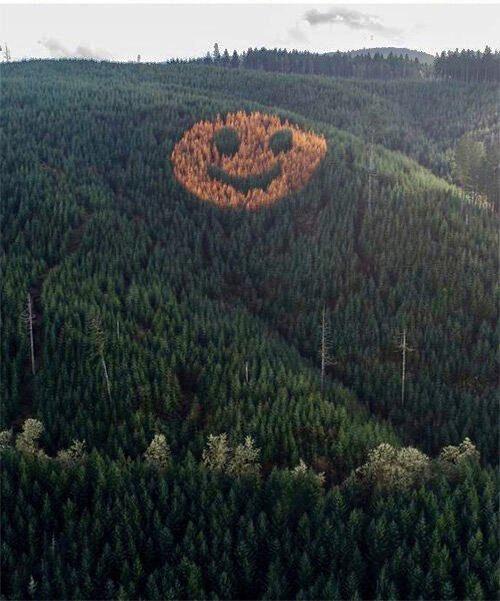What would happen if emoji were brought to life? That must somewhat have been the idea when Tony Leondis and Eric Siegel started working on the story for the The Emoji Movie1 (2017).

The result is the worst of cinematic under-achievements that premiered on July 23, 2017 and was theatrically released in the United States five days later. The film was a commercial success after grossing $217.8 million worldwide — against its $50 million production budget — but was universally lambasted by critics, who criticized its script, humor, use of product placement, tone, voice performances, lack of originality, and plot, with negative comparisons and similarities to other animated films.
The Emoji Movie was nominated for five awards at the 38th Golden Raspberry Awards2, winning four. It was the first animated film to win in any of those categories. It is frequently cited as the worst film of 2017, as well as one of the worst animated movies ever made. On the review aggregator website Rotten Tomatoes3, The Emoji Movie has an approval rating of 6% based on 134 professional reviews, with an average rating of 2.9/10. The movie has an audience rating of 3.4/10 on IMDb4.
Assignment
There's plenty of room for improvement here, is what we must have thought when coming up with this assignment. As a result, we used various techniques to encode the names of characters from animated movies in the form of emoji. This was done by replacing each letter in the name of the character with one or more emoji, without making a distinction between uppercase and lowercase letters. All non-letter characters in the name have simply been left in place. For example, this is such an encoded name:
🐇🐺🐵☃☃
To be able to decipher the encoded name, we give you a tip by means of a dictionary (dict) that maps each emoji (str) in the encoded name onto the name (str) of a character from an animated movie. The name of the animated character only consists of uppercase letters and the character itself is anthropomorphized5 version of what is represented by the emoji. These are the names of the animated characters that go with the emoji in the encoded name we used as an example above:
| emoji | name |
|---|---|
| ☃ | OLAF |
| 🐇 | BUGSBUNNY |
| 🐵 | LOUIE |
| 🐺 | AKELA |
In this case, the encoded name can be deciphered by replacing each emoji with the first letter of the name that goes with it according to the tip. This yields BALOO6 — the name of the anthropomorphic sloth bear who appears as a character in The Jungle Book7. But we also used other ways to encode names as sequences of emoji.
Your task:
-
Write a function first_letter that takes an encoded name (str) and the corresponding tip (dict). The function must return the name (str) that is obtained by replacing each emoji by the first letter of the name it goes with according to the tip. The function must
-
only consider characters in the encoded name as an emoji if they occur as keys in the dictionary of the corresponding tip; characters that are not emoji simply remained in place in the encoded name
-
never change the dictionary that is passed as a tip
These conditions also apply to the following two functions.
-
-
Write a function repeated_emoji that takes an encoded name (str) and the corresponding tip (dict). The function must return the name (str) that is obtained by replacing each sequence of $$n$$ of the same emoji by the $$n$$-the letter of the name that goes with the emoji according to the tip. For example, if the encoded name contains three ☃-emoji in a row (☃☃☃) and the ☃-emoji corresponds to the name OLAF according to the tip, then those three ☃-emoji must be replaced by the letter A as the third letter of the name.
-
Write a function next_letter that takes an encoded name (str) and the corresponding tip (dict). The function must return the name (str) that is obtained by replacing the $$n$$-th occurrence of an emoji by the $$n$$-the letter of the name that goes with the emoji according to the tip, while assuming that the last letter in the name is again followed by the first letter in the name. For example, if an ☃-emoji goes with the name OLAF according to the tip, then the first ☃-emoji in the encoded name must be replaced by O as the first letter in the name, the second ☃-emoji by L as the second letter in the name, the third ☃-emoji by A as the third letter in the name, the fourth ☃-emoji by F as the fourth letter in the name, the fifth ☃-emoji by O as the first letter in the name (the name only has four letters, so after the fourth letter comes the first letter again), and so on.
Example
>>> first_letter('🐇🐺🐵☃☃', {'☃': 'OLAF', '🐇': 'BUGSBUNNY', '🐵': 'LOUIE', '🐺': 'AKELA'})
'BALOO'
>>> first_letter('🐸🐺🧜', {'🐸': 'KERMIT', '🐺': 'AKELA', '🧜': 'ARIEL'})
'KAA'
>>> first_letter('🧚☃👦', {'☃': 'OLAF', '👦': 'MOWGLI', '🧚': 'TINKERBELL'})
'TOM'
>>> repeated_emoji('😸🧸🧸🚗🚗🚗☃☃☃💰💰💰🐳🐳', {'☃': 'OLAF', '🐳': 'MONSTRO', '💰': 'SCROOGEMCDUCK', '😸': 'FELIXTHECAT', '🚗': 'LIGHTNINGMCQUEEN', '🧸': 'WINNIETHEPOOH'})
'FIGARO'
>>> repeated_emoji('❄🦊🦊🦊🐺🐺🐺🐭🐭🐭😸😸 🐺🐺🐘🦘🦘🐾🐾', {'❄': 'SNOWWHITE', '🐘': 'HATHI', '🐭': 'JERRY', '🐺': 'AKELA', '🐾': 'SNOOPY', '😸': 'FELIXTHECAT', '🦊': 'JOHNWORTHINGTONFOULFELLOW', '🦘': 'KANGA'})
'SHERE KHAN'
>>> repeated_emoji('👦👦👦🦗🦗❄❄🦆🦆🦆🚗🚗🐤🐤🐤-⭐⭐⭐🦊🦊🦊🐤🐤🐤-🧽🧽🐳🐳🐰🐰👧👧', {'❄': 'SNOWWHITE', '⭐': 'PATRICKSTAR', '🐤': 'TWEETY', '🐰': 'ROGERRABBIT', '🐳': 'MONSTRO', '👦': 'MOWGLI', '👧': 'SHANTI', '🚗': 'LIGHTNINGMCQUEEN', '🦆': 'DONALDDUCK', '🦊': 'JOHNWORTHINGTONFOULFELLOW', '🦗': 'JIMINY', '🧽': 'SPONGEBOBSQUAREPANTS'})
'WINNIE-THE-POOH'
>>> next_letter('🐶🧜🧜🐱🧜🧜🐵🦆', {'🐱': 'FIGARO', '🐵': 'LOUIE', '🐶': 'GOOFY', '🦆': 'DONALDDUCK', '🧜': 'ARIEL'})
'GARFIELD'
>>> next_letter('🐁☃🧸🐶🐵🧸', {'☃': 'OLAF', '🐁': 'MICKEYMOUSE', '🐵': 'LOUIE', '🐶': 'GOOFY', '🧸': 'WINNIETHEPOOH'})
'MOWGLI'
>>> next_letter('🐗🐵🐗🐅🐵', {'🐅': 'TIGGER', '🐗': 'PUMBAA', '🐵': 'LOUIE'})
'PLUTO'
>>> next_letter('🐼🐼🤓🐼🧜🐟🐼🐙🧜', {'🐙': 'URSULA', '🐟': 'DORY', '🐼': 'PO', '🤓': 'MINION', '🧜': 'ARIEL'})
'POMPADOUR'
Epilogue
David Hampton planted douglas fir (Pseudotsuga menziesii) and larch trees (Larix) in a forest in Oregon to resemble a face. Every autumn the larch pines turn orange and the smiley face stands out.


The face is about 300 feet in diameter. Rope was used to measure the circle in which douglas fir was planted for the eyes and mouth. The rest of the face was filled out with larch. Both species will eventually be harvested but will smile at least for the next 30-50 years.